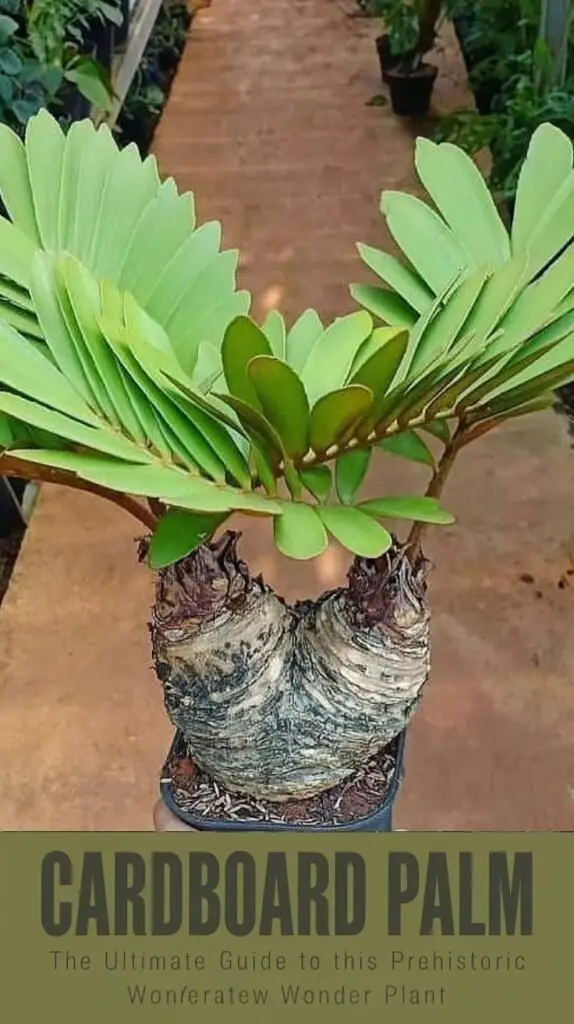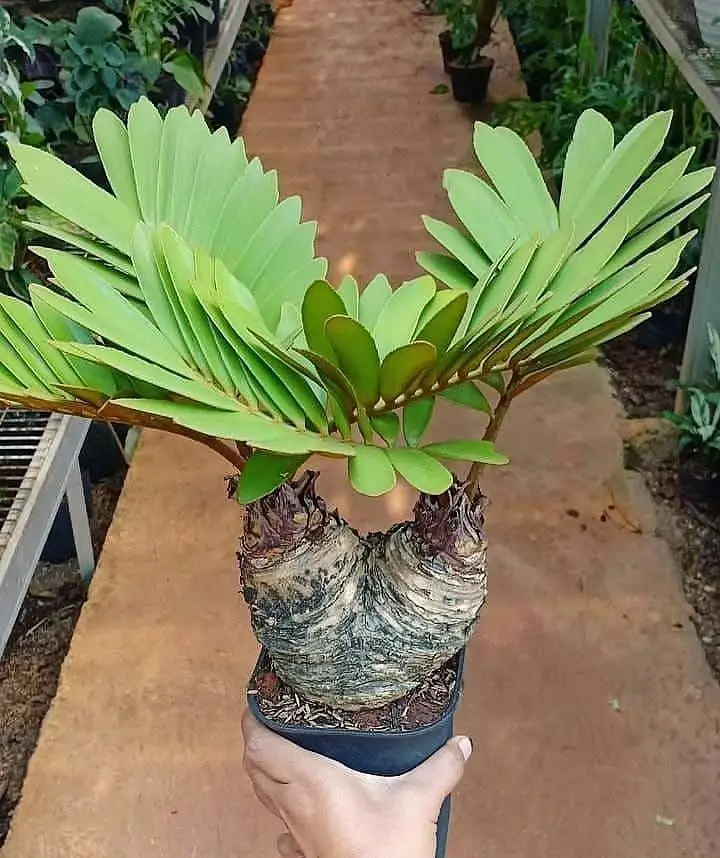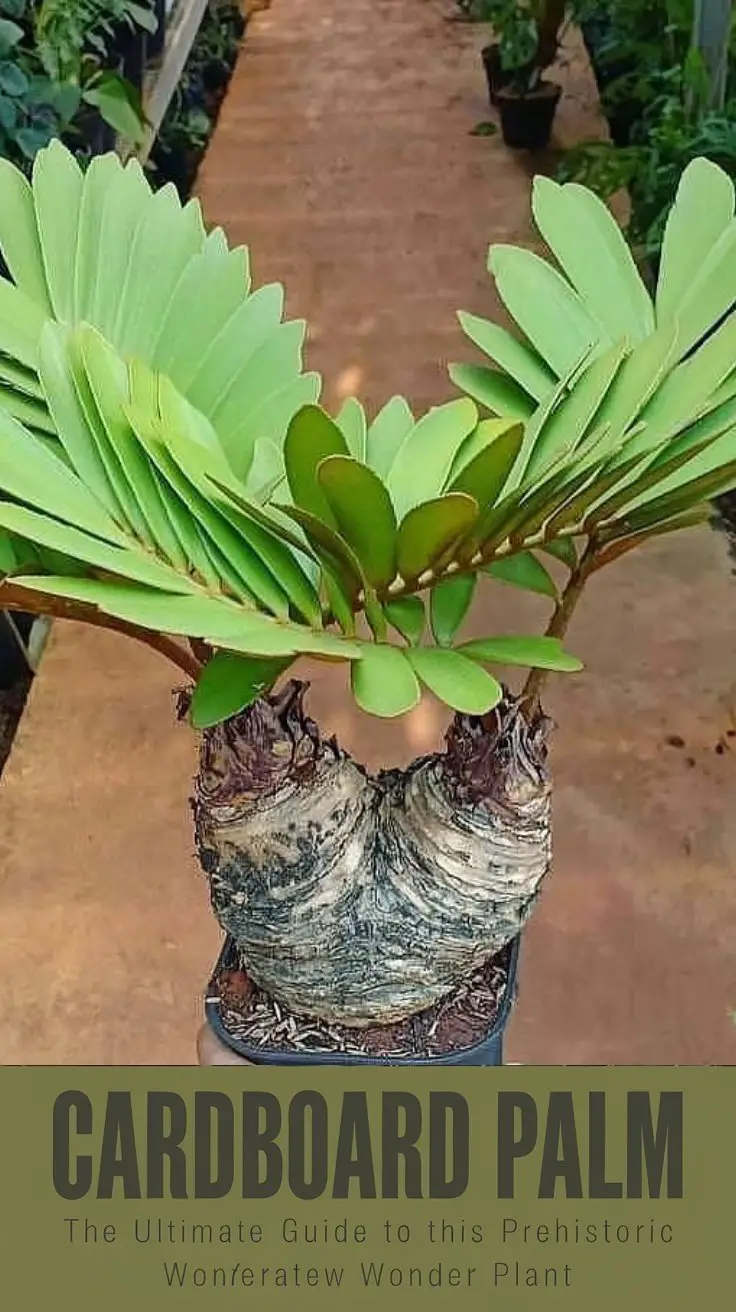Discover the fascinating world of the Cardboard palm (Zamia furfuracea) in our comprehensive 2024 guide. Learn about its care, propagation, and unique features. Perfect for plant enthusiasts and novice gardeners alike!
The cardboard palm, scientifically known as Zamia furfuracea, is a remarkable plant that brings a touch of prehistoric charm to modern gardens and interiors. Despite its name, it’s neither a true palm nor made of cardboard. This unique cycad has survived since the age of dinosaurs, offering gardeners a living fossil to nurture and admire. In this comprehensive guide, we’ll explore everything you need to know about the cardboard palm, from its care requirements to its fascinating history.

As a botanist specializing in cycads and ancient plant species, I’m thrilled to share my expertise on this extraordinary plant. Let’s dive into the world of the cardboard palm and discover why it’s capturing the hearts of plant enthusiasts in 2024!
What is a Cardboard Palm?

The cardboard palm is a cycad native to Mexico, particularly the state of Veracruz. Key features include:
- Appearance: Stiff, flat leaves resembling cardboard in texture
- Size: Typically grows 3-4 feet tall and wide
- Growth Rate: Slow-growing, making it ideal for long-term container planting
- Lifespan: Can live for several decades with proper care
2024 Trend: Increased popularity in minimalist interior design due to its sculptural form.
Fun Fact: Despite its palm-like appearance, it’s more closely related to pine trees than true palms!
Caring for Your Cardboard Palm
Light Requirements
Optimal Conditions: Bright, indirect light; can tolerate full sun in cooler climates
How to Provide:
- Place near a south-facing window indoors
- Use dappled shade in hot, sunny outdoor locations
2024 Innovation: New light-measuring apps help determine perfect placement for optimal growth.
Pro Tip: Gradually acclimate your plant when moving it to a sunnier spot to prevent leaf burn.
Watering Needs
Frequency: Allow soil to dry between waterings; typically every 1-2 weeks
How to Water:
- Water thoroughly until it drains from the bottom
- Reduce watering in winter when growth slows
2024 Update: Smart self-watering pots with moisture sensors are gaining popularity for consistent care.
Pro Tip: Use rainwater or distilled water if your tap water is high in minerals.
Soil and Fertilizer
Soil Type: Well-draining, slightly acidic soil (pH 6.1-6.5)
Fertilizer:
- Use a balanced, slow-release fertilizer in spring and summer
- Avoid fertilizing in fall and winter
2024 Trend: Sustainable, organic fertilizers made from food waste are becoming more common.
Pro Tip: Add perlite or coarse sand to improve drainage in container mixes.
Temperature and Humidity
Ideal Temperature: 60-80°F (15-27°C)
Humidity: Tolerates average home humidity; prefers slightly higher levels
2024 Research: Studies show increased cold tolerance in cardboard palms grown with specific beneficial fungi.
Pro Tip: Use a pebble tray filled with water to increase humidity around the plant.
Propagation
Cardboard palms can be propagated through:
- Seeds:
- Slow but rewarding process
- Seeds may take several months to germinate
- Offsets (Pups):
- Remove carefully from the parent plant
- Allow cut end to callus before planting
2024 Innovation: New rooting hormones specifically formulated for cycads are improving propagation success rates.
Pro Tip: Wear gloves when handling seeds or pups, as some people may experience skin irritation.
Common Problems and Solutions
- Yellow Leaves:
- Cause: Overwatering or poor drainage
- Solution: Adjust watering schedule and improve soil drainage
- Brown Leaf Tips:
- Cause: Low humidity or fluoride in water
- Solution: Increase humidity and use filtered water
- Slow Growth:
- Cause: Normal for the species, but could indicate nutrient deficiency
- Solution: Ensure proper fertilization and light conditions
2024 Update: New plant health apps use AI to diagnose problems from photos, providing tailored care advice.
The Cardboard Palm in History and Culture
- Ancient Lineage: Cycads like the cardboard palm have existed for over 280 million years
- Cultural Significance: Used in traditional medicine by indigenous people in Mexico
- Conservation Status: Listed as endangered in the wild due to habitat loss
2024 Trend: Increasing interest in cultivating endangered species to support conservation efforts.
Styling and Design with Cardboard Palms
- Modern Minimalism: Perfect focal point in sleek, contemporary interiors
- Tropical Oasis: Pair with other tropical plants for a lush, jungle-like atmosphere
- Rock Gardens: Ideal for water-wise outdoor landscaping in suitable climates
2024 Design Trend: “Living Fossil” themed rooms featuring cardboard palms and other ancient plant species.
Embracing the Prehistoric Charm
The cardboard palm offers a unique opportunity to nurture a piece of Earth’s ancient history in your own home or garden. Its low-maintenance nature, coupled with its fascinating backstory, makes it an ideal choice for both novice gardeners and experienced plant enthusiasts.
As we continue to appreciate and cultivate these living fossils, we play a small but significant role in their conservation. By understanding and sharing knowledge about plants like the cardboard palm, we contribute to a broader awareness of plant biodiversity and the importance of preserving it for future generations.
For more information on cycads and their conservation, visit the Cycad Society or your local botanical garden. Happy growing, and may your cardboard palm thrive as a testament to nature’s enduring wonders!
For more gardening tips and plant care guides, visit usagardenhub.com




